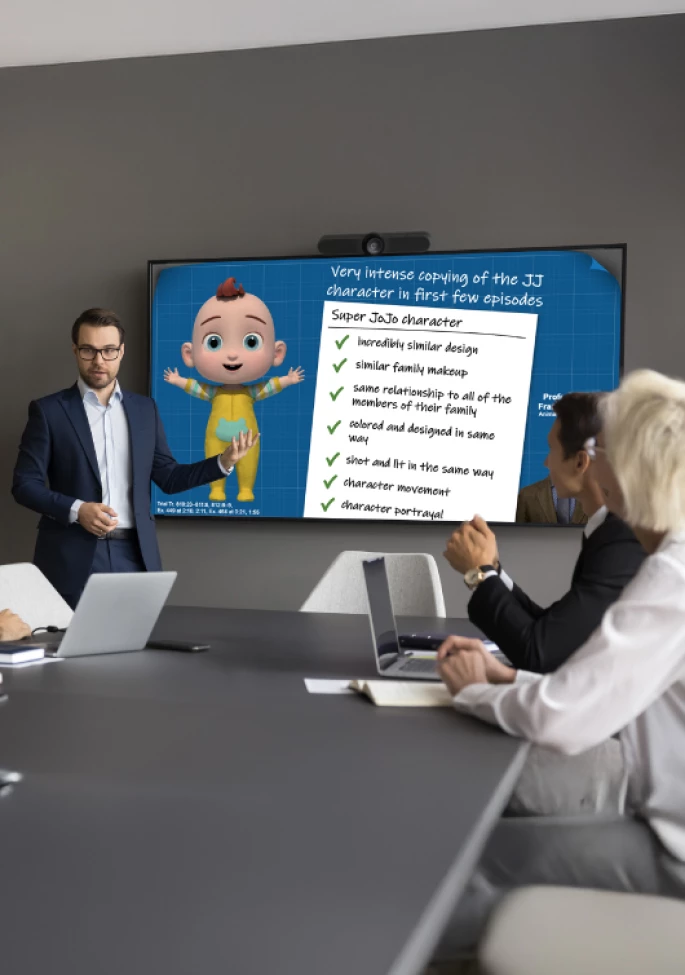One of the first questions potential clients want to know when they call us is: How much does a mock trial cost? Considering that costs and expenses are a significant factor to any attorney or client’s budget, this question is certainly a valid one that deserves consideration.
That being said, the answer to this question—as you might imagine—is “It depends.” But simply saying that is not enough, which is why the purpose of this article is to explain the factors that will impact the cost of your next mock trial.
Mock Trial Pricing: No One Size Fits All
When it comes to a well-designed mock trial, there is not a one-size-fits-all price. Instead, there is a wide variety of prices for different sized projects. Over the years, we have seen mock trials quoted from $10K to $60K, or even higher at times. So, why the wide disparity in cost, you might ask? Well, it comes down to how the mock trial is designed.
The ideal mock trial is one where the design choices allow you to rely on the results. That is, it is important to be able to generalize to the larger population.
If cost is an issue and shortcuts are made with some of the key design choices, then the consequence could be devastating and the results could be based on biased results (e.g., a false positive) and strategic decisions being made from these results—such as settlement or mediation decisions—could be gravely impacted. We hear all the time that the most expensive mock trial is the one where corners are cut to save on costs, thereby sacrificing the reliability of your results.
Below is a list of key factors necessary to ensure you are making the right choices when planning for a mock trial:
Proper Recruitment of Mock Jurors
This is one of the most important factors for determining if your results will be reliable. Steeped in social science methodology, it is essential to receive a sample of participants that are representative of the jury panel you are trying to mirror.
Recruiting friends and family (or finding people who are looking for research projects online) may be extremely cost effective—aka cheap—but will provide a skewed sample.
It is important to use a mix of methods to ensure the participants showing up match not only the demographics, but also the sensibilities of the expected jury panel. Improper recruitment of mock jurors may lead to a false positive and the making of serious strategic decisions based on flawed information. As clients have told us, an attempt to save a few bucks in this area is a costly mistake.
Location of the Mock Trial
Is your case in rural Mississippi or in NYC, Honolulu, or LA? The disparity of costs is discernable. To state the obvious, the prices in NYC or Honolulu are far greater than in a rural area such as Laurel, Mississippi.
When it comes to costs associated with geographic location among the states, there is not a one-size-fits-all price and, as a result, this factor can significantly impact the cost of a mock trial.
Type of Mock Trial Meeting Facility
Closely tied to geographic location is the type of meeting facility used to hold the mock trial. Cities typically have market research facilities that are equipped with two-way mirrors allowing observers to sit behind the glass to view all the presentations and deliberations.
Unfortunately, these efficient facilities are not found in rural areas, which often means securing hotel meeting space to serve as our “courtroom.” Viewing the proceedings/deliberations in a hotel requires a closed-circuit audio/visual set-up, which can add significantly to the cost.
Mock Trial Duration
Naturally, whether a mock trial runs a day, two days, or even three days, the duration of the project will certainly affect the overall expense.
Number of Mock Jurors Participating in the Mock Trial
When studying the optimum number of people to participate in a focus group, academic researchers have determined that a group of between eight and 10 people will provide good discussion.
Therefore, if you are holding a three-jury panel project, it will require a recruitment yield of 30 mock jurors. Now, what also adds to the cost is the fact that all researchers have to “over-recruit” participants to ensure that 30 jurors show up and remain. Of course, if the mock trial is using only two jury panels, then you will realize a cost savings as fewer jurors will be needed.
Number of Jury Panels in the Mock Trial
Mock trials can have multiple jury panels simultaneously deliberating. With each jury panel that is added (two, three, or more), there is a meeting room rental that is incurred.
Methodologically speaking, a three-group mock trial offers more reliability in the results, as often the third jury group will act as a “tie-breaker” if the first two groups align in their verdicts. The third group helps clarify whether a group of jurors could arrive at a different verdict decision—and how likely it is to happen. However, while a two-jury panel mock trial test reduces meeting room rental costs, it still provides important jury decision-making findings.
Type of Analysis of the Results
The level to which your mock trial results are analyzed can have a significant impact on the cost of your mock trial. Be sure to ask the jury research firms you are interviewing for an explanation of what you will receive.
Some firms solely quantify the demographics and answers to attitude questions via demonstrative charts and graphs, without providing a synthesis of results. Others add an oral summary to the graphs, while others (like IMS) provide a comprehensive written analysis providing not only strategic recommendations, but also themes to refine your story to better connect with your target audience—the jury.
Knowing the details of what level of analysis you will receive is a critical component to determining if the cost estimates from multiple consultants are comparable.
How to Ensure You’re “Comparing Apples to Apples” for Mock Trial Bids
It is really important to receive an “apples to apples” comparison of bid estimates for the cost of a mock trial. Not all firms use the same bidding methodology. Many provide a flat fee bid for the consultant’s billable time and note that the project expenses are extra (project time PLUS expenses).
As noted above, those project expenses—renting a meeting facility, the number of jurors recruited, etc.—are significant ones that can easily approach or equal the billable flat fee bid. This can lead to sticker shock when the invoice arrives showing the cost of the project as almost double the fee for consultants’ billable time.
To avoid client “sticker shock,” it is our practice to estimate the cost of a particular job within a range that includes both consultant time and project expense costs associated with implementing the research (e.g., facility, recruitment, etc.). Because we want to provide budget certainty for our clients, it is important to compare bids equally (i.e., both project time AND expenses) and note whether it is an “apples to apples” or an “apples to oranges” comparison (i.e., comparing project time AND expenses versus project time PLUS expenses).
Conclusion
When budgeting for a mock trial, you need to carefully consider the effectiveness of the methods used to implement the test (e.g., recruiting friends and family) and how thorough and accurate you want the results to be. As we’ve discussed above, cutting corners may lower your costs, but it will also lower the quality—and generalizability—of your results.
Sadly, many attorneys have learned the hard way that there is nothing more expensive than a mock trial that failed to provide reliable test results.
Cutting costs on recruitment and other critical methodological considerations, as well as the analysis, can significantly impact the reliability of the project. Compare your project bids carefully and choose your jury research consultant wisely.
View this article on The National Law Review here: How Much Does a Mock Trial Cost? (natlawreview.com)







